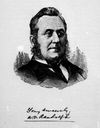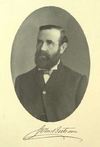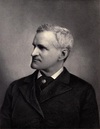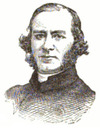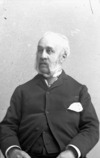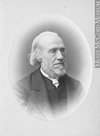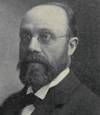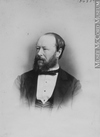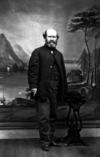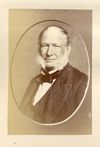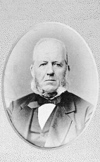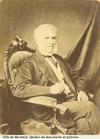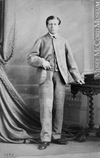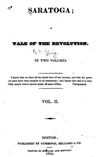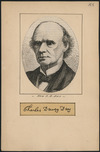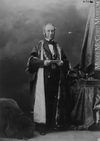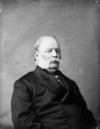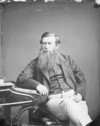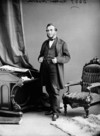November. While in Peterborough Bertram had abandoned Presbyterianism in favour of Unitarianism, though his wife had not. At his funeral a minister of each faith officiated
joined the Unitarian Church, and George was to remain a staunch Unitarian throughout his life. The Liberal Christian, a monthly journal edited by Cordner, was published by H. and G. M
, Samuel Parkman, was a wealthy merchant and shipowner, and his father a prominent Unitarian minister. In 1840, after attending schools in Medford and Boston, Parkman entered Harvard University, which then
. 8 Oct. 1816 in Boston, son of Unitarian minister Charles Lowell and Harriet Brackett Spence, elder brother of poet and literary critic James Russell Lowell; m
won the competition to design the prison at Plymouth. In the same year they had a commission to design Unitarian schools at Taunton. Between 1848 and 1851, when the partnership is presumed to have ended
daughters; d. 20 March 1900 in Toronto.
George Hope Bertram was named after George Hope, the noted Scottish agriculturist and Unitarian
Presbyterian until 1840 and member of the St Gabriel Street Church, he converted to Unitarianism under the influence of the Reverend John Cordner
unitarian, and leaned toward Owenite and radical views in politics. His diary, resumed in Paris after lapsing in 1835, shows him as having discussions with Louis-Joseph
.
Stephens lived with his wife and children in his elegant home on Dorchester Street surrounded by three acres of manicured lawns and shrubs overlooking the city. He was a Unitarian, as were several other
, Hope was able to leave to his brother and sons a successful iron and hardware firm.
Adam Hope shared the liberal outlook and Unitarian religion of his
of the Montreal Times and Commercial Advertiser in order to make it a reliable Reform organ. He accepted and, upon moving to Montreal, became active in the Unitarian community. Hincks soon
his estrangement may have been his second marriage, to Mary Kent Bradbury, a Unitarian from Boston. His first marriage on 4 Jan. 1842 to Frances Michael David, his first cousin, ended with her
Congregationalist Unitarian Church in Brighton, and Hannah Webster, novelist; d. 4 May 1886 at Montreal
.”
Carman Miller
ANQ-M, État civil, Presbytériens, St Andrew’s Church (Montreal), 1830–36; Unitariens, Messiah Unitarian
family moved to Liverpool, England, where he was educated and raised as a Unitarian. On the completion of his formal education, Charles entered the Liverpool office which his father ran for the family firm
especially painful. Throughout most of his adult life, Workman was an adherent of the Unitarian church; he once confided to a friend that, as a Unitarian, he was “accustomed to vituperation from opposing
, along with the Unitarian Francis Hincks*, in the St Patrick Society, which had been founded in 1834. Both of them, with Lewis Thomas
” – the contemporary Island name for atheists, agnostics, Unitarians, and apostates – and he did not have strong convictions about the intrinsic rightness or wrongness of either Protestantism or Roman
Unitarian Society of Montreal on 6 June 1842. His Unitarianism sprang from his association with his uncle, Moses Gilbert, who was one of the earliest Unitarians in Montreal. As a member of the society’s




